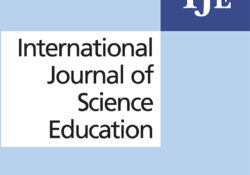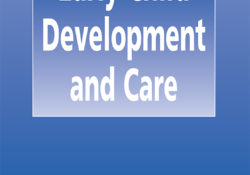
tandfonline.com har udgivet en rapport under søgningen “Teacher Education Mathematics”: ABSTRACT Formulae display:?Mathematical formulae have been encoded as MathML and are displayed in this HTML version using MathJax in order to improve their display. Uncheck the box to turn MathJax off. This feature requires Javascript. Click on a formula to zoom. ABSTRACT Students’ argumentation skills are considered a central tool to contribute to scientific controversies in the science classroom. Scientific controversies of social relevance (socioscientific issues; SSI) are subject to multiple viewpoints that are often rooted in diverse disciplines. However, the relationship between issue familiarity and students’ multidisciplinary argumentation is still a matter under discussion. This study: (1) explores whether the selection of a particular issue (animal testing) enables students’ engagement in multidisciplinary argumentation without additional issue familiarisation, i.e., using… Continue Reading →
Like this:
Like Loading...
tandfonline.com har udgivet en rapport under søgningen “Teacher Education Mathematics”: ABSTRACT ABSTRACT In times of climate change, worldwide diseases, and the question of sustainable energy, scientific literacy has never been more important. The acquisition of scientific literacy starts in early childhood and depends on children’s experiences in learning environments such as the parental home and kindergarten. The Starting Cohort 2 of the German National Educational Panel Study offers longitudinal data on the scientific literacy of 2,937 children from kindergarten to the third grade of primary school. We used linear latent growth curve models to analyse the data. The results show that the scientific literacy of kindergarten children grew over time and that kindergarten children already differed in their scientific literacy. Especially children from non-German-speaking homes or whose parents had lower… Continue Reading →
Like this:
Like Loading...
tandfonline.com har udgivet en rapport under søgningen “Teacher Education Mathematics”: ABSTRACT ABSTRACT This paper links early foundations in science for young children to the eventual achievement of science literacy for adults. There are five key arguments being made: (i) the early-years foundation stage (EYFS) specialists need to have a view for exactly what foundations are being laid in classrooms; (ii) that they all need to be – minimally – scientifically literate, despite the variety of definitions of that term; (iii) becoming scientifically literate is a long-term process of engaging with and developing an interest in ‘matters scientific’ that are easily available in the public domain; (iv) that there is a plethora of informal learning opportunities in science across the UK to foster adult engagement, and (v) taking a ‘helicopter view’… Continue Reading →
Like this:
Like Loading...
tandfonline.com har udgivet en rapport under søgningen “Teacher Education Mathematics”: ABSTRACT ABSTRACT The present paper takes its point of departure in risk being a relevant content for science education, and that there are many different approaches to how to incorporate it. By reviewing the academic literature on the use and definitions of risk from fields such as engineering, linguistics and philosophy, we identified key elements of the risk concept relevant for science education. Risk is a phenomenon of the future that may be conveyed by our activity, it is something that may or may not take place. Hence, at the core of risk we find uncertainty and consequence. Furthermore, the elements of probability and severity are relevant modifiers of the consequence, as well as both subject to uncertainty. Additionally, in… Continue Reading →
Like this:
Like Loading...



